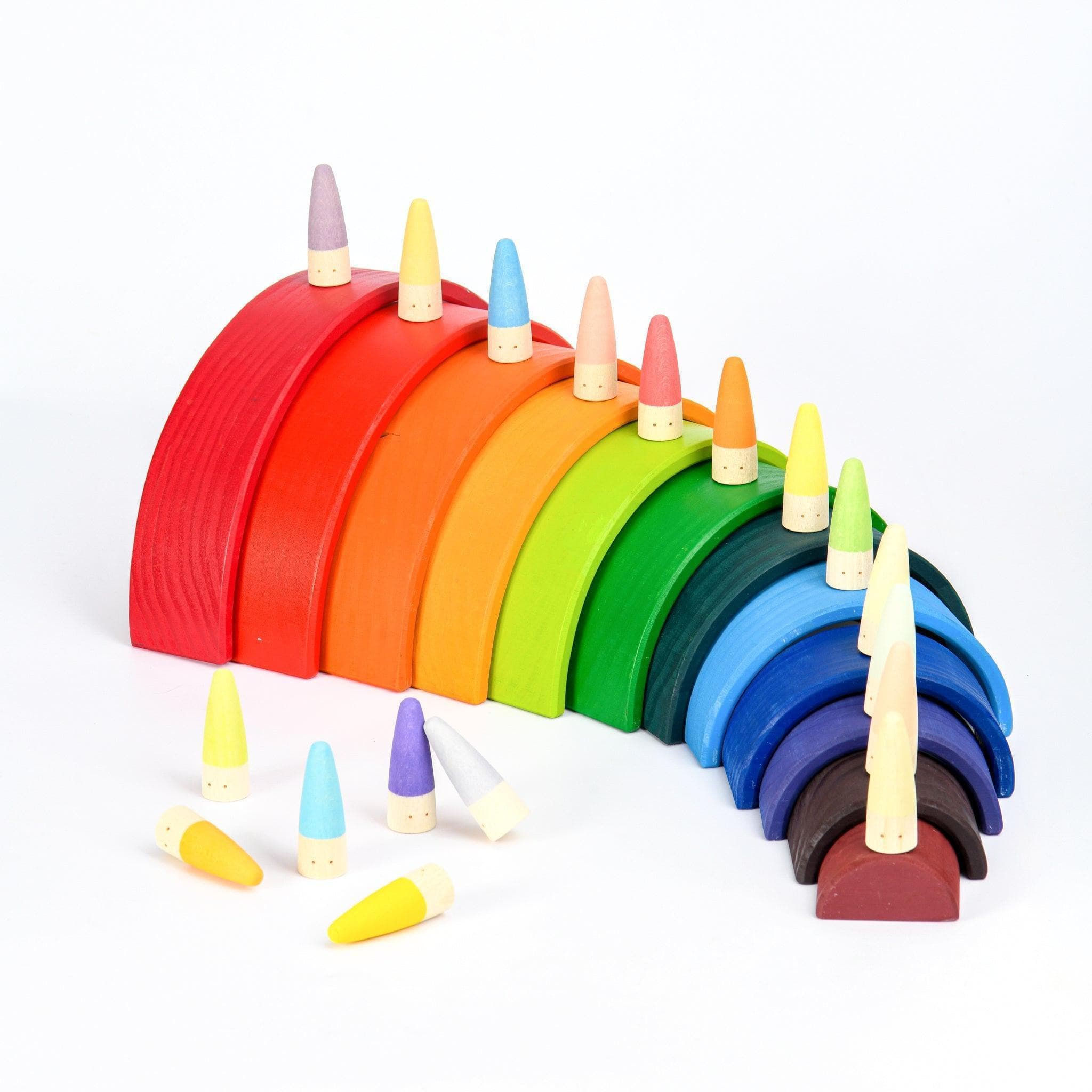Understanding the Difference between Gross and Fine Motor Skills in Children
It's important to understand the different types of motor skills that your child needs to develop. Two of the most important ones are gross motor skills and fine motor skills. While both are essential for a child's overall development, they differ in their functions and are developed in different ways. In this article, we'll explain the difference between gross and fine motor skills and how wooden toys can help improve them.
What are Gross Motor Skills?
Gross motor skills refer to the large movements of the body that involve the use of the muscles in the arms, legs, and torso. These movements include walking, running, jumping, crawling, and climbing. Gross motor skills are important for a child's overall physical development, as they help to strengthen the muscles and improve balance and coordination.
What are Fine Motor Skills?
Fine motor skills refer to the small movements of the body that involve the use of the muscles in the hands and fingers. These movements include gripping, grasping, pinching, and manipulating objects. Fine motor skills are important for a child's cognitive and social development, as they help to improve hand-eye coordination, dexterity, and the ability to perform tasks that require precision and accuracy.
The Importance of Developing Gross and Fine Motor Skills in Children
Both gross and fine motor skills are important for a child's overall development. Gross motor skills help children to build strength and coordination, which are essential for physical activities such as sports and outdoor play. Fine motor skills, on the other hand, help children to develop the ability to perform tasks that require precision and accuracy, such as writing, drawing, and using utensils.
The development of both gross and fine motor skills is critical for children's overall growth and development. These skills not only enable children to engage in physical activities but also allow them to perform tasks that require precision and accuracy. Parents and caregivers can help facilitate the development of these skills by encouraging children to engage in activities that promote their development.
How Wooden Toys can Help Develop Gross and Fine Motor Skills
Wooden toys can be highly beneficial for the development of both gross and fine motor skills in children. These toys offer a range of opportunities for children to engage in physical play and explore their environment in a safe and enjoyable manner.
- For gross motor skills, wooden toys such as balance boards, push toys, and ride-on toys can help children improve their balance, coordination, and muscle strength. Balance boards, for instance, can help children develop their sense of balance and coordination as they stand, sit, or rock on the board. Push toys and ride-on toys, on the other hand, can help children improve their gross motor skills as they move and navigate around their environment.
- For fine motor skills, wooden toys such as puzzles, building blocks, and lacing toys can help children improve their hand-eye coordination, dexterity, and ability to manipulate objects. Wooden puzzles, for example, can help children develop their problem-solving skills and spatial awareness as they manipulate the puzzle pieces to fit together. Building blocks and lacing toys can help children improve their hand-eye coordination and dexterity as they stack blocks or thread laces through the holes.

In addition to being great tools for developing motor skills, wooden toys are also safe and eco-friendly. Unlike plastic toys, wooden toys are free from harmful chemicals and are biodegradable, making them a great choice for parents who are concerned about their child's health and the environment.
Understanding the difference between gross and fine motor skills is important for parents who want to help their children develop to their fullest potential. By providing your child with wooden toys that are designed to improve both gross and fine motor skills, you can help them to build the strength, coordination, and dexterity that they need for a healthy and happy life.












